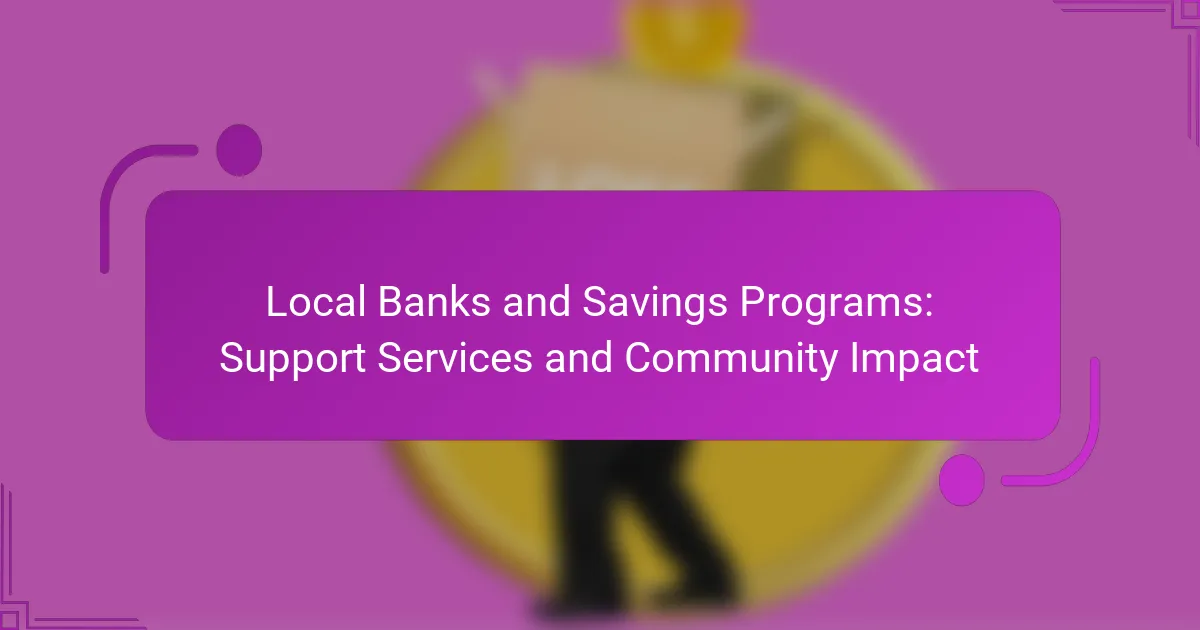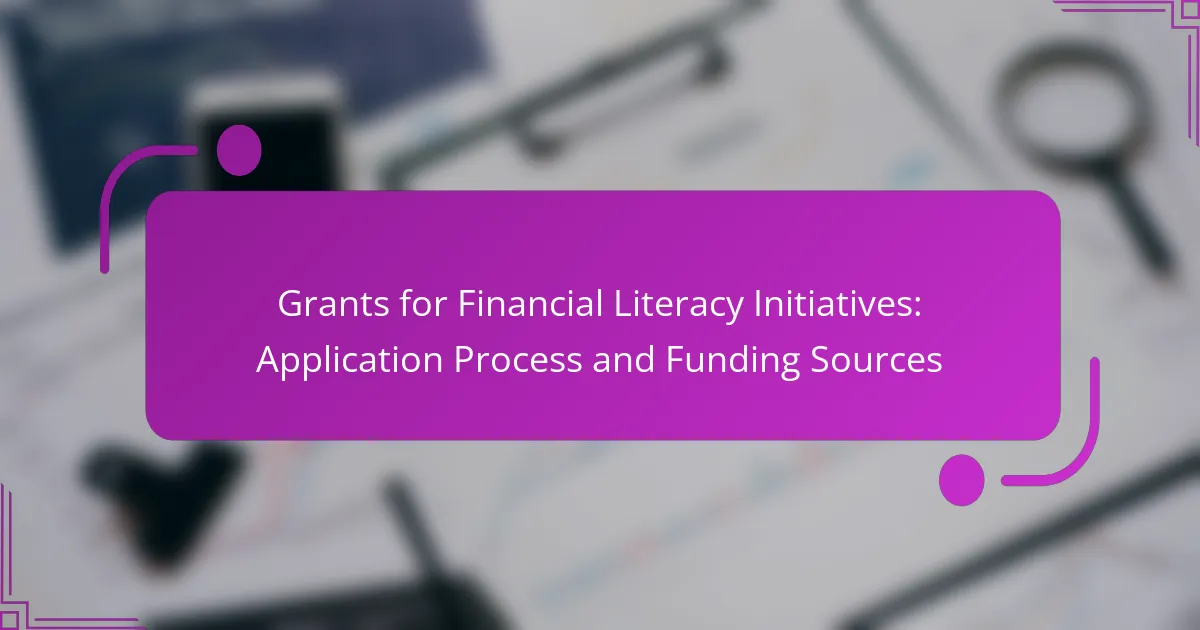Federal assistance programs play a crucial role in supporting individuals and families facing economic hardships by providing essential services in areas such as nutrition, housing, healthcare, and education. Eligibility for these programs is determined through specific criteria, including income levels and household size, ensuring that aid reaches those who need it most. By offering financial assistance, healthcare access, and educational funding, these programs significantly enhance the quality of life for eligible participants and contribute to poverty alleviation.

What are the key federal assistance programs available?
Key federal assistance programs provide essential support to individuals and families in need across various areas such as nutrition, housing, healthcare, and education. These programs aim to alleviate poverty and improve the quality of life for eligible participants.
Supplemental Nutrition Assistance Program (SNAP)
The Supplemental Nutrition Assistance Program (SNAP) offers financial assistance for purchasing food to low-income individuals and families. Eligible participants receive an Electronic Benefits Transfer (EBT) card, which can be used at authorized retailers to buy groceries.
To qualify for SNAP, applicants must meet income and resource limits, which vary by household size. Benefits can range from a few dozen to several hundred dollars per month, depending on the household’s circumstances.
Temporary Assistance for Needy Families (TANF)
The Temporary Assistance for Needy Families (TANF) program provides financial aid and support services to low-income families with children. TANF aims to promote self-sufficiency through job preparation, work opportunities, and parenting skills.
Eligibility is determined by factors such as income, family size, and residency. Benefits typically last for a limited time, often up to five years, and can include cash assistance, childcare support, and job training programs.
Housing Choice Voucher Program
The Housing Choice Voucher Program, also known as Section 8, assists low-income families in affording safe and decent housing in the private market. Participants receive vouchers that subsidize a portion of their rent, making housing more affordable.
Eligibility is based on income and family size, with local Public Housing Authorities administering the program. Vouchers can cover a significant portion of rent, but participants must find housing that meets program standards and is within the local payment limits.
Medicaid
Medicaid is a federal and state program that provides healthcare coverage to eligible low-income individuals and families. It covers a wide range of services, including hospital visits, doctor appointments, and long-term care.
Eligibility varies by state, but generally includes low-income adults, children, pregnant women, and individuals with disabilities. Medicaid can significantly reduce out-of-pocket healthcare costs, making it a crucial resource for those in need.
Federal Pell Grant
The Federal Pell Grant is a need-based financial aid program for low-income undergraduate students pursuing higher education. Unlike loans, Pell Grants do not require repayment, making them a valuable resource for students.
Eligibility is determined by the Free Application for Federal Student Aid (FAFSA), and grant amounts can vary based on financial need, cost of attendance, and enrollment status. Pell Grants can cover a substantial portion of college expenses, helping to reduce student debt.

How do federal assistance programs evaluate eligibility?
Federal assistance programs evaluate eligibility based on specific criteria that determine if applicants meet the necessary requirements. These criteria often include income levels, household size, and residency status, which help ensure that assistance reaches those who need it most.
Income-based criteria
Income-based criteria are a fundamental aspect of eligibility for federal assistance programs. Typically, applicants must demonstrate that their income falls below a certain threshold, often expressed as a percentage of the federal poverty level (FPL). For example, many programs require an income at or below 125% to 200% of the FPL, depending on the type of assistance.
To assess income, applicants may need to provide documentation such as pay stubs, tax returns, or bank statements. It’s essential to be accurate and transparent about income sources, as discrepancies can lead to denial of benefits.
Household size considerations
Household size plays a crucial role in determining eligibility for federal assistance programs. The number of individuals living in a household affects the income limits and the overall benefits available. For instance, a larger household may have a higher income threshold compared to a single-person household.
When applying, it’s important to accurately report all household members, including children and dependents, as this information influences the assessment of need and eligibility. Misreporting can result in penalties or loss of benefits.
Residency requirements
Residency requirements dictate that applicants must be legal residents of the country or state where they are seeking assistance. Most federal programs require proof of residency, which can include documents like utility bills, leases, or government-issued identification.
Some programs may have additional stipulations, such as requiring applicants to reside in the state for a specific period before applying. Understanding these residency rules is crucial, as failing to meet them can disqualify an applicant from receiving assistance.

What benefits do federal assistance programs provide?
Federal assistance programs offer a variety of benefits aimed at improving the quality of life for eligible individuals and families. These programs can provide financial aid, healthcare access, food security, and educational funding, helping to alleviate poverty and promote well-being.
Financial support for low-income families
Financial support through federal assistance programs is designed to help low-income families meet their basic needs. Programs such as Temporary Assistance for Needy Families (TANF) provide cash benefits that can be used for housing, utilities, and other essential expenses.
Eligibility for these programs often depends on income level, family size, and state regulations. Families may receive monthly payments that vary based on their circumstances, typically ranging from a few hundred to over a thousand dollars per month.
Access to healthcare services
Federal assistance programs like Medicaid and the Children’s Health Insurance Program (CHIP) provide essential healthcare services to eligible low-income individuals and families. These programs cover a wide range of services, including routine check-ups, emergency care, and preventive services.
To qualify, applicants must meet specific income thresholds and other criteria, which can differ by state. Many beneficiaries find that these programs significantly reduce their out-of-pocket healthcare costs, making medical care more accessible.
Food security and nutrition
Programs such as the Supplemental Nutrition Assistance Program (SNAP) help ensure food security for low-income families by providing monthly benefits to purchase food. SNAP benefits are typically loaded onto an electronic card, which can be used at grocery stores and farmers’ markets.
Eligibility is based on household income and size, and benefits can vary widely, often providing hundreds of dollars per month. Additionally, programs like WIC (Women, Infants, and Children) offer specialized nutrition assistance for pregnant women and young children.
Educational funding
Federal assistance programs also include educational funding options, such as Pell Grants and federal student loans, aimed at helping low-income students afford college. Pell Grants provide financial aid that does not need to be repaid, while loans must be paid back after graduation.
Eligibility for these programs is determined by financial need and academic performance. Students can receive thousands of dollars in aid, which can significantly reduce the financial burden of higher education and increase access to learning opportunities.

How can individuals apply for federal assistance programs?
Individuals can apply for federal assistance programs through various methods, including online applications and in-person visits to designated offices. Understanding the application process is crucial for accessing the benefits available to eligible citizens.
Online application processes
Many federal assistance programs offer online application options, allowing individuals to submit their requests conveniently from home. Applicants typically need to create an account on the program’s official website, fill out the required forms, and provide necessary information about their financial situation and household composition.
It is advisable to have all relevant documents ready before starting the online application, as this can streamline the process. Some programs may also provide a tracking feature, enabling applicants to monitor the status of their submissions.
In-person application options
For those who prefer face-to-face interactions, in-person application options are available at local offices or community centers. This method can be beneficial for individuals who have questions or need assistance while completing their applications.
To apply in person, individuals should locate the nearest office that administers the specific federal assistance program they are interested in. It is often recommended to schedule an appointment to minimize wait times and ensure that staff can provide adequate support.
Documentation requirements
When applying for federal assistance programs, individuals must provide specific documentation to verify their eligibility. Common requirements include proof of income, identification, and information about household members.
Applicants should prepare documents such as pay stubs, tax returns, Social Security numbers, and any relevant bank statements. Ensuring that all documents are complete and accurate can help avoid delays in processing applications.

What are the prerequisites for accessing federal assistance?
To access federal assistance, applicants must meet specific prerequisites that typically include proof of income, citizenship or legal residency, and age or disability status. These criteria ensure that assistance is directed to those who genuinely need it and qualify under federal guidelines.
Proof of income
Proof of income is a fundamental requirement for federal assistance programs. Applicants usually need to provide documentation such as pay stubs, tax returns, or bank statements that verify their income level. This information helps determine eligibility based on income thresholds, which often vary by program.
For example, many programs require that household income does not exceed a certain percentage of the federal poverty level. Applicants should be prepared to submit recent financial documents to expedite the evaluation process.
Citizenship or legal residency
Citizenship or legal residency is another critical criterion for accessing federal assistance. Most programs require applicants to be U.S. citizens or legal residents, which includes individuals with permanent resident status. This requirement ensures that assistance is provided to those who have a legal right to reside in the country.
To verify citizenship or residency, applicants may need to present documents such as a birth certificate, passport, or green card. It’s essential to check the specific requirements of each program, as some may have additional stipulations regarding residency duration.
Age and disability status
Age and disability status can significantly influence eligibility for certain federal assistance programs. Many programs are designed specifically for children, seniors, or individuals with disabilities, and applicants must provide documentation to confirm their status in these categories.
For instance, programs like Social Security Disability Insurance (SSDI) require proof of disability through medical records or evaluations. Similarly, age-related programs may have specific age cutoffs, such as 65 years for senior assistance. Applicants should gather relevant documentation to support their claims and ensure a smooth application process.

How do state variations affect federal assistance programs?
State variations significantly influence the implementation and accessibility of federal assistance programs. Each state has the authority to tailor these programs to meet local needs, which can lead to differences in eligibility, benefits, and application processes.
Eligibility Criteria
Eligibility criteria for federal assistance programs can differ widely from state to state. For instance, some states may have stricter income limits or additional requirements based on local economic conditions. Understanding these variations is crucial for applicants to ensure they meet the specific criteria set by their state.
Benefit Levels
The level of benefits provided through federal assistance programs often varies by state due to differing cost-of-living factors and state budgets. For example, a state with a higher cost of living may offer more substantial benefits compared to one with a lower cost. Applicants should research their state’s benefit levels to gauge what support they can expect.
Application Processes
Application processes for federal assistance programs can also vary significantly by state. Some states may offer online applications, while others require in-person visits or paper submissions. It’s essential for applicants to familiarize themselves with their state’s specific application procedures to avoid delays or complications.



